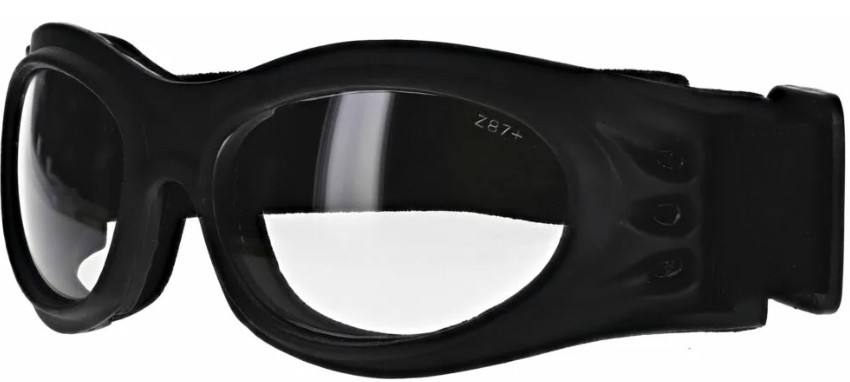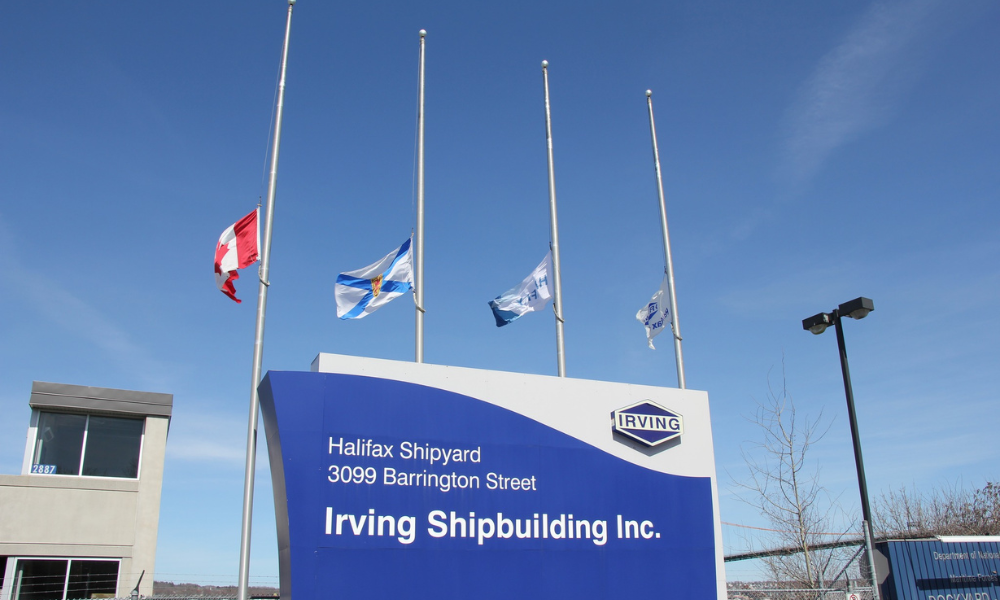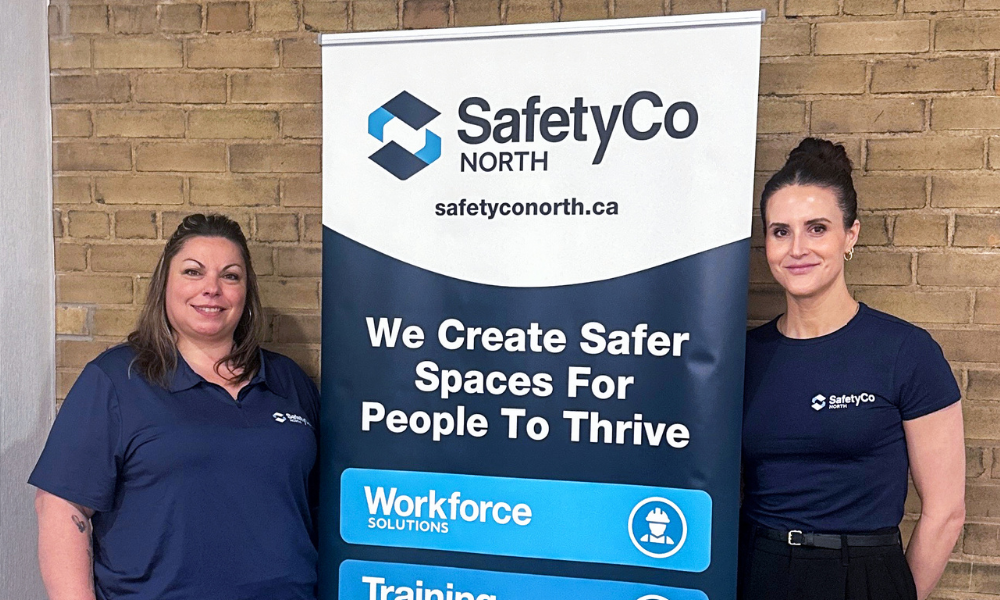Workers nowadays don’t have to use protective eyewear over their prescription glasses. This guide on procuring the best prescription safety goggles explains why

- The best prescription safety goggles to recommend to your team
- Industries that need prescription safety goggles
- Regulatory standards for prescription safety eyewear in Canada
- Safety glasses vs safety goggles: what’s the difference?
- What to look for in prescription safety goggles
- Testing requirements for prescription safety goggles
- Can I buy RX safety goggles online?
In the past, workers who used eye protection but also needed vision correction would typically wear protective eyewear over their prescription glasses. While this would have protected their eyes from flying debris and other risks, the protective goggles would fog over easily.
Nowadays, this is hardly an issue with the issuance of prescription safety goggles – personal protective equipment (PPE) that combines the functions of both items. Thanks to advancements in protective eyewear, safety glasses and prescription lenses, you can outfit workers with a single piece of vision-correcting safety eyewear.
In this guide, Canadian Occupational Safety discusses the need, functionality, and importance of prescription safety glasses. We’ll also provide you a list of the best available products in the market. So, let’s dive in.
The best prescription safety goggles to recommend to your team
Here’s a sample list of some of the best prescription safety eyewear you can get in Canada. They can vary in terms of design, but these models meet the prescribed safety standards for protection and reliability.
Some may also vary in terms of application and may be more suitable for specific industries.
Note that some models are purchasable as ordinary safety glasses by default, and the buyer must specify the need for prescription lenses in their order. Pore through their features to know which models or brands meet your workers’ safety requirements best.

1. Pentax ZT400
Price range: $65.24 with polycarbonate lenses / $87.74 with Trivex lenses
Japan’s world-renowned camera and optical equipment manufacturer, Pentax, offers these safety glasses. The Pentax ZT400 is a modular pair of safety glasses comprised of a lens carrier frame and lens assembly.
The carrier frame comes in eight colours to accommodate buyers’ preferences. These safety glasses fall under the Class 1A protective glasses category.
The frame can be customized to have prescription safety lenses and come with a removable head strap for a tighter fit. Its latex-free, and rubber nose pads and temples ensure a secure but comfortable fit. The product conforms with ANSI Z87.1 standards for high mass and high velocity impact resistance. A frame case or pouch is included with Rx orders.
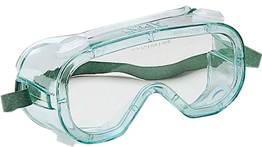
2.KleenGuard V80 SG34 Safety Goggles
Price: depends on order quantity; available in cases of 50 pairs
These safety goggles by KleenGuard offer comfortable splash protection. Note, however, that the lens itself is not prescription-grade. Rather, these safety goggles are designed to be worn over a worker’s own prescription glasses.
These goggles have button vents for indirect ventilation and splash protection. They feature headband buckles toward the rear of the frame for a better fit, and to avoid interfering with the wearer’s peripheral vision. The product's clear lenses allow maximum visible light transmission and are ideal for indoor use. The SG34 splash goggles’ polycarbonate lenses provide 99.9% UVA/UVB/UVC protection and meet the ANSI Z87.1+ standards for impact, with a D3 rating against droplets and splashes.
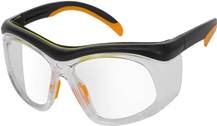
3. RX Safety Auburn Prescription Safety Goggles
Price: $143.03 per pair
These are scratch-resistant and impact-resistant safety goggles that comply with the ANSI Z87.1 safety standard. Standard lens options include clear, polarized, sun and transition lenses. The lenses can also be configured as prescription lenses, which are available in bifocal, progressive, and single-vision types.
The wraparound design gives increased protection and a snug fit. The product's adjustable nose pad ensures better comfort. Orders can come with free microfibre cloth, carrying case, and a free scratchproof coating on the lenses.
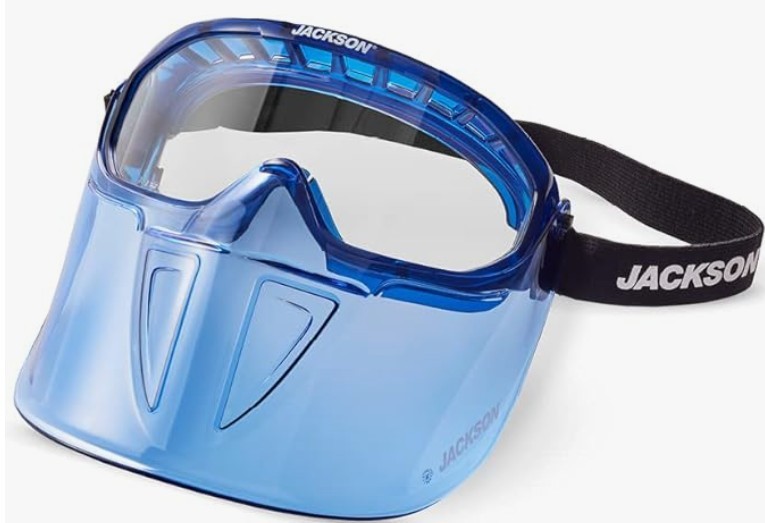
4. Jackson Safety GPL530 Safety Goggles with detachable face shield
Price: $44.99 with clear lens, $76.01 with Shade 3 IR protection, $71.43 with Lens Shade 5
This is a high-quality safety goggles with a unique feature: a detachable flip-up face shield. The Jackson Safety GPL530 has indirect vents and an anti-fog coating, ensuring the wearer’s safety even in the most demanding environments.
The goggles easily conform to the wearer’s face for a snug and comfortable seal and maximum protection against liquids and dust. The anti-fog safety glasses are made to fit over prescription lenses, with a clear lens for an unobstructed panoramic view. With its clear lens, the Jackson Safety GPL530 is ideal for cutting and welding applications, as it meets ANSI Z87.1 and CSA Z94.3 safety standards.
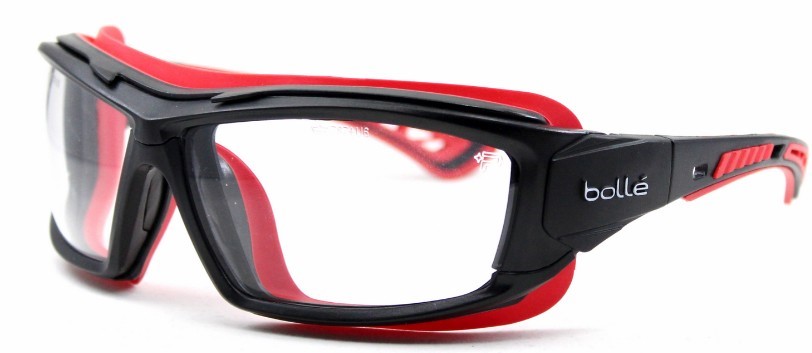
5. Bolle ULTIM8 ANSI Rated Prescription Safety Goggles
Price: $39.00
These safety prescription glasses from Bolle are designed for both form and function, with a sleek design that provides a secure fit to keep workers’ eyes protected in a variety of work environments.
The product's key features include an anti-fog/anti-scratch coating for unobstructed vision and keeping lenses free from blemishes to ensure durability. It also has TPR waterproof foam and PC/TPR pivoting temples, providing maximum comfort and protection.
These goggles comply with ANSI Z87.1-2010, ANSI Z87.1-2015 and ANSI Z87.2 when fitted with the Rx frames. The Bolle ULTIM8 comes standard with a removable adjustable strap and temple/goggles conversion kit so wearers can customize the eyewear for any situation.

6. Honeywell Uvex Avatar RX Safety Glasses
Price: $52.21 each or $4,767 for a case of 100 pairs
The Uvex Avatar by Honeywell was designed for use with safety headwear. These safety glasses come with wraparound temples and soft tip pads for a better fit with helmets.
These glasses also feature Insulated wire-core temples that are non-conductive for working around power sources and have superior adjustability and customizability. The product's ultra-light frame is constructed from leading-edge composite materials to reduce its overall weight. Workers don’t have to worry about fogging, since these glasses have a patented indirect venting system to prevent condensation or moisture buildup.
Those with imperfect vision can choose from a wide range of Rx lenses and magnifications for their needs, while enjoying maximum field of vision and protective coverage.

7. ArmourX 6014RX
Price: $72.12 (frame only), add $134.44 for single-vision lenses; add $230.59 for progressive essential; add $296.48 for progressive premium; add $145.12 for bifocal lenses
The ArmourX 6014RX glasses feature a wraparound safety frame with integral side shield protection. These goggles offer reliable protection as they comply with safety standards CSA Z94.3 and ANSI Z87.1.
Your staff can have choices of Rx lenses ranging from +4.00 to -6.00, making this a sound choice of prescriptive safety goggles for staff composed of different people with varying vision problems.
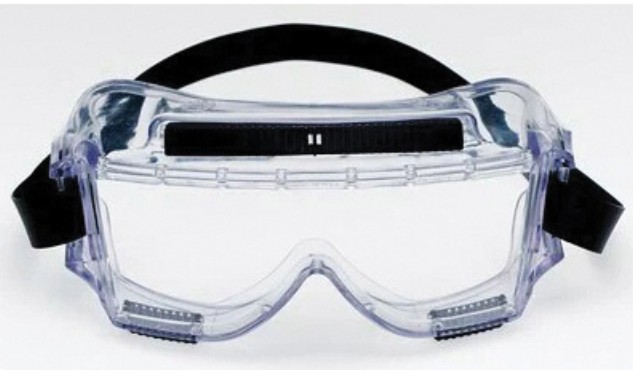
8. 3M Centurion Safety Splash or Impact Goggles
Price: $157.16 per case or $15.72 per pair
This is a highly reliable pair of safety goggles from world-famous manufacturer 3M. These goggles feature a wraparound frame that affords excellent peripheral vision. While you cannot switch the lens to a prescription lens, the goggles are large enough to accommodate the wearer’s prescription glasses underneath.
Some of these models have an anti-fog coating and direct venting to cut down on fogging. The lens itself is durable and considerably impact-resistant.
9. RX Safety RX-RK2
Price: $64.99
The RX-RK2 is a pair of safety goggles with available prescription lenses. These ANSI-compliant product features an innovative vented design to keep the lenses from fogging. With its comfortable wrap-around style, flame-retardant adjustable strap, and soft foam seal, the product ensures a secure fit.
The RX-RK2 is made of TR-90 nylon and is lightweight. These prescription safety goggles meet the ANSI Z87-2+ high velocity and high mass safety standards of protection.
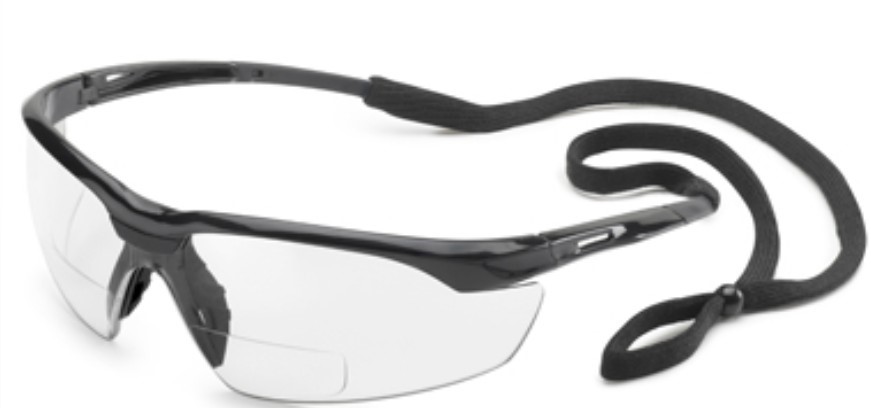
10. Gateway Safety Conqueror MAG Bifocal protective eyewear
Price range: $33.03 to $47.53
Construction foremen, engineers, and architects will appreciate the safety and vision-enhancing capability that the Conqueror MAG Safety Bifocals from Gateway Safety provides. With these prescription safety glasses, wearers can maximize focus on small details while protecting the eyes from high-impact hazards.
These glasses come in diopter levels one to three. The Gateway Conqueror features a durable, one-piece polycarbonate wraparound lens that is compliant to ANSI Z87.1 and CSA Z94.3 standards. With its soft rubber nosepiece and ergonomic contoured temple tips, these prescription safety glasses are sufficiently comfortable for workers to keep on throughout their workday.
Industries that need prescription safety goggles
These are essential PPEs for workers with less than perfect vision and are engaged in industries that require sufficient eye protection. Prescription safety goggles can ensure the protection of workers’ eyes while raising their effectiveness. Here are the most common industries that require these goggles:
1. Construction industry
This industry has numerous hazards that require a high level of eye protection. Flying debris, chemical splashes, dust particles, and heavy equipment that pose safety risks during operation and maintenance are among these hazards.
Construction workers are also often exposed to small particles from cutting, grinding, sanding, and hammering, all of which pose eye hazards. Apart from providing ample protection from these dangers, prescription safety goggles for construction should be highly durable, with features like anti-fog coatings, UV protection, and impact-resistant lenses.
It’s advisable to choose from among the best prescription safety goggles for construction sites if you’re in this business.
2. Manufacturing
Like construction, the manufacturing industry involves operating and maintaining a lot of heavy equipment and stationary machinery. Activities in this industry can expose workers to chemical splashes, sparks, dust, metal shavings, and other small debris. Due to the complexity of the work, the manufacturing sector typically requires workers to have excellent vision, even while wearing protective glasses or goggles.
3. Auto repair industry
Technicians and mechanics in the auto industry generally work in environments with a plethora of hazards. They can be exposed to sparks, particulate matter from painting, grinding, and cutting, and strong fumes and splashes of chemicals.
Despite these risks, many workers in the auto repair and other sectors sometimes neglect to use their protective goggles or glasses.
A report by the Canadian Centre for Occupational Health and Safety (CCOHS), says there are about 200 eye injuries in Canada daily. The same report mentions that the Canadian National Institute for the Blind (CNIB) states that 90 percent of these eye injuries could have been prevented simply by wearing protective eyewear.
4. Healthcare industry
Eye protection is also crucial in the healthcare sector. Staff can be exposed to biological hazards like contaminated or infected blood and other bodily fluids. They may also need to work with dangerous chemicals, necessitating more protective equipment that whisks away harmful fumes or odors.
Dentists, surgeons, lab technicians, and other healthcare professionals are constantly exposed to risks of eye injuries. Work environments like clinics, hospitals, and laboratories all need protective eyewear to maintain safety standards and preserve visual acuity.
That’s why using protective eyewear with prescription lenses can lessen the risk of these injuries while accommodating their corrective vision needs.
5. Quarrying and mining
This industry is full of hazards that pose great risk of injuries to workers’ eyes and other body parts. Flying rocks, dust, debris, and chemicals are a small sample of the many eye hazards that workers face daily. Given that the average age of miners is 45 years old, many miners are prone to having vision problems; making prescription safety goggles or glasses a must.
Keep in mind that the aforementioned industries are those with the highest incidence of eye injuries. It is also important to know that generally, wearing protective eyewear is a small part of ensuing the overall safety of your workforce.
When looking for the best protective eyewear for your company and its employees, remember to procure all the necessary PPEs appropriate for your industry for protecting the head, face, torso, hands, legs, and feet as well.
In cases when workers get debris, dust, or other harmful substances into their eyes, having the best eyewash stations installed is a good safety measure.
Regulatory standards for prescription safety eyewear in Canada
In Canada, the primary regulatory authorities that establish and oversee safety standards for eye protection are:
- Canadian Standards Association (CSA)
- Canadian Centre for Occupational Health and Safety (CCOHS)
- American National Standards Institute (ANSI)
The main safety standard that is involved in setting the minimum standards and performance requirements for prescription safety goggles is the CSA standard Z94.3-15. However, some industries and companies also choose to adopt the standards set by the American National Standards Institute (ANSI) and its corresponding standard for safety eyewear, ANSI Z87.1.
Safety glasses vs safety goggles: what’s the difference?
As you may have noticed, the terms safety goggles and safety glasses are sometimes used interchangeably. While they may seem similar, they have subtle but critical differences. For one, safety glasses offer less protection than safety goggles in certain work environments. These PPEs differ in terms of:
Comfort
Most safety glasses are lighter and more comfortable than safety goggles, which are often bulkier and more difficult to put on and take off. However, there are some designs of safety goggles that have a soft frame gasket that can make them more comfortable to use.
Protection
Safety goggles afford more protection, as they typically create a closed, airtight seal around the eyes while glasses have gaps around the lenses. Safety goggles are more suited to protecting against airborne particles, splashes of hazard chemicals or liquids, and projectiles. Safety glasses are usually effective in shielding eyes from projectiles but lack the ability to protect eyes from fine particles or splashes.
Using corrective lenses
Safety goggles without corrective lenses can be worn over prescription spectacles. The same cannot be done with safety glasses.
Impact protection
While safety glasses do have some degree of impact resistance due to their material, safety goggles typically have greater impact resistance.
What to look for in prescription safety goggles
Knowing that your industry and company requires safety goggles for its workers, how do you go about choosing the best ones? The way to do it is to ensure that the goggles are designed to meet safety standards established by the CSA and the ANSI.
The CSA Z94.3 standard categorizes several classes of protective eyewear and face shields. For our purposes, we’ll focus on eye protection. When procuring prescription safety goggles and other protective eyewear, here are the safety ratings you should know about:
Class 1A protective spectacles
These protective glasses are meant to protect the wearer from impact hazards. Their design includes side protection for enhanced safety in work environments where flying particles are also a risk.
Class 1B protective spectacles
These are like the 1A spectacles but are specifically designed for environments and scenarios that require non-ionizing radiation protection along with the impact hazards.
Class 2A direct ventilated goggles
These goggles provide a combination of impact protection and direct ventilation. This type of goggles is often used in scenarios where it’s essential for the wearer to have a clear line of sight while keeping the eyes protected against flying debris.
Class 2B non-ventilated and indirect ventilated goggles
This type of goggles is meant for environments where splash and dust protection are critical, but the wearer also needs protection from impact hazards.
Class 2C goggles for non-ionizing radiation
Apart from impact hazards, this safety goggle type protects the wearer from non-ionizing radiation, such as ultraviolet rays.
Class 2D goggles for laser radiation
These goggles incorporate both impact resistance and protection against laser radiation – hazards that can both lead to temporary and permanent blindness.
Class 2E goggles for electrical arc protection
These goggles offer a degree of impact protection while protecting the eyes from the adverse effects of electrical arc flashes.
Testing requirements for prescription safety goggles
To be deemed compliant with the CSA standards, prescription safety goggles must pass rigorous testing procedures, including:
- Impact resistance test – this test determines how well the lenses can withstand the impact forces of certain weights at different speeds. If the lenses chip, shatter, break, or crack, this product is deemed a failure and, therefore, does not meet CSA standards.
- Ignition resistance test – this test ensures that the lenses do not catch fire when exposed to high temperatures. The test consists of having a 300mm long steel rod that’s 6mm in diameter with flat ends heated to 650 C, then pressed against the lens for 5 seconds and then removed. To pass this test, the rod is applied to all exposed parts of the protective goggles, and its parts must not ignite or continue to glow after removing the steel rod.
CSA markings and certifications
To know which the best prescription safety goggles or glasses that fit your company’s needs, look for the appropriate markings that indicate the type of protection and function they provide. You should also check for the CSA logo to confirm the legitimacy of these markings, and the safety features they represent.
CSA-compliant products must carry the mark of CSA or any other certifying body that tests and certifies products to CSA as a third party on the glasses or goggles’ lens or temple. To ensure that the protective eyewear you purchase for your staff is legitimate, the manufacturer or supplier certification mark must be seen on all approved safety lenses, safety frames (front and temple), removable side shields, and other parts of the eyewear. Also, when inspecting safety eyewear, there is a difference between markings that say, “certified by CSA” and “meets CSA standards”
.jpeg)
Image: hexarmor.com
NOTE: “Certified” to the CSA Group standard means that the testing and evaluation must be done or has been done by the CSA Group or in a testing lab that is qualified and audited routinely by CSA.
“Meets” CSA Group standard means that the CSA has not reviewed the testing data or certified the product. Instead, "meets” means that the testing has been conducted independently, and the test results should be made available to potential buyers upon request.
ANSI markings and certifications
When it comes to prescription safety goggles, ANSI defines minimum coverage requirements for frames to ensure both the front of the wearer’s eyes and the sides are protected. Minimum lens thickness is also an important consideration.
ANSI also recommends various lens retention systems to ensure lenses fit more securely in the safety frame than a typical pair of glasses. In addition, they define the testing methodologies for high mass and high velocity impact resistance, and several other qualifications including splash protection. Prescription safety goggles that meet ANSI Z87.1 standards for design requirements and pass tests defined by ANSI will have visible markings.
If you find a supplier that offers safety eyewear from a US manufacturer or uses the ANSI standard, here’s what you should look for to ensure they are ANSI compliant and of excellent quality:
- Z87-2: Rx (medical prescription/medically prescribed)
- H: coverage
- +, Z87+, Z87-2+: impact mark
- O2: relaxed optimal level
- W shade: welding filter lens
- U scale number: UV filter lens
- R scale number: Infrared filter lens
- L scale number: visible light filter lens
- V: variable tilt lens
- S: special purpose lens
- X: anti-fog coating
- D3: splash/droplet use
- D4: dust use
- D5: fine dust use
You can see a more detailed description of these markings from the ANSI website and their corresponding guides. A certified safety professional may also help you decipher the importance, the meanings of these markings and which safety eyewear with these markings can serve your needs best.
Can I buy RX safety goggles online?
Yes, there are many retailers and wholesalers of this type of PPE you can find with a simple online search. Many of these suppliers and manufacturers will also have a customer service hotline should you have more questions about their products.
There are many unseen benefits to choosing the right prescription safety eyewear to your workers who need them. This PPE not only protects staff from dangerous hazards, but the corrective lenses ensure that they maintain visual acuity and are able to do their jobs well. The anti-fog coating and anti-scratch coating of quality RX safety goggles give them have high usage and durability, so you don’t have to worry about workers not using them.
Providing your workforce with PPEs like these can boost morale and raise your company’s reputation as an organization that takes care of its own, and not only because it’s part of industry regulations.
If you found this article on prescription safety goggles useful, don’t hesitate to let us know or share your concerns in the comments


